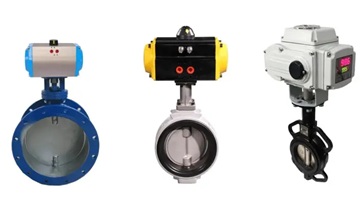


Key Benefits of Butterfly Control Valves in Industrial Applications
The Advantages of Butterfly Control Valves in Industrial Applications
Butterfly control valves are widely used in various industrial systems for their efficient flow regulation, compact structure, and cost-effectiveness. Featuring a rotating disc mounted on a central shaft, these valves control fluid flow with a simple quarter-turn operation. Their ability to handle a wide range of flow media and pressure conditions makes them a preferred choice in sectors such as water treatment, wastewater management, power generation, chemical processing, and HVAC systems.
This article outlines the key benefits of butterfly control valves and why they are a practical solution for modern fluid control systems.
Butterfly valves offer exceptional versatility, suitable for both on-off and throttling services. They respond quickly to control signals, making them ideal for applications that require precise regulation and frequent cycling. Their dependable sealing capability ensures leak-free performance, even in challenging environments involving corrosive fluids, suspended solids, or varying temperatures.
From potable water systems to industrial processing lines, butterfly valves accommodate diverse flow conditions while maintaining precise modulation.
One of the most notable advantages of butterfly control valves is their compact, space-saving design. Compared to bulkier alternatives like gate or globe valves, butterfly valves are lighter and require less structural support. This simplifies installation, reduces material costs, and minimizes the load on piping systems.
Their smaller footprint is especially beneficial in systems where space is limited, such as in marine vessels, skid-mounted process units, or overhead pipelines.
The unique disc design enables smooth and unrestricted flow control, making butterfly valves suitable for handling large flow volumes. They perform effectively in systems with low to moderate pressure differentials and are capable of throttling flow with good precision.
Additionally, their ability to operate in media containing solids—such as in slurry lines or wastewater treatment—demonstrates their versatility across tough industrial environments.
Butterfly valves are designed to operate with lower torque compared to other valve types, which translates to reduced energy consumption for actuation. The disc’s aerodynamic profile minimizes pressure drop across the valve, enhancing overall system efficiency.
In automated systems, this low torque requirement means smaller actuators can be used, leading to further energy and cost savings. Their design also helps reduce the risk of water hammer during operation, prolonging equipment life.
Cost is a critical factor in valve selection, and butterfly control valves offer an excellent balance between performance and affordability. They typically cost less than ball or globe valves of comparable size and pressure rating. Their fewer moving parts and straightforward design mean they require less maintenance and are easier to service in-line.
Automated butterfly valves can also be easily integrated into control systems using electric or pneumatic actuators, further improving long-term cost-efficiency.
Butterfly valves can open or close fully with a 90-degree rotation, allowing for fast actuation in critical systems. They are available in various configurations, including concentric (zero-offset), double-offset, and triple-offset designs, to suit specific application needs and pressure requirements.
Higher-offset designs enhance sealing performance and durability, making them suitable for high-pressure steam, gas, and chemical services.
Butterfly control valves combine compact design, operational efficiency, and cost advantages to deliver dependable performance in a wide range of industrial applications. Their ability to regulate flow accurately, handle challenging media, and integrate seamlessly into automated systems makes them a valuable component in today’s process control environments. For engineers seeking reliable, low-maintenance, and budget-friendly flow control solutions, butterfly valves remain a top choice.Know more about Google SEO Directory
